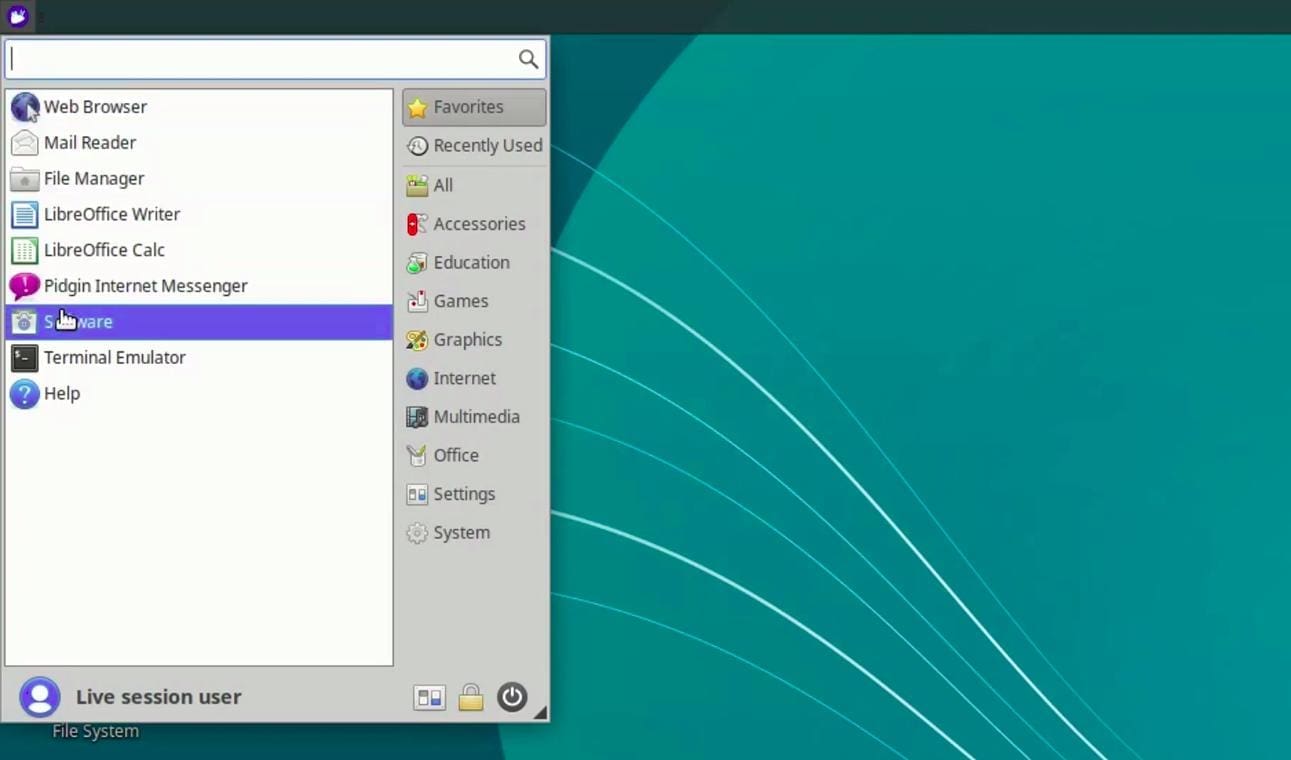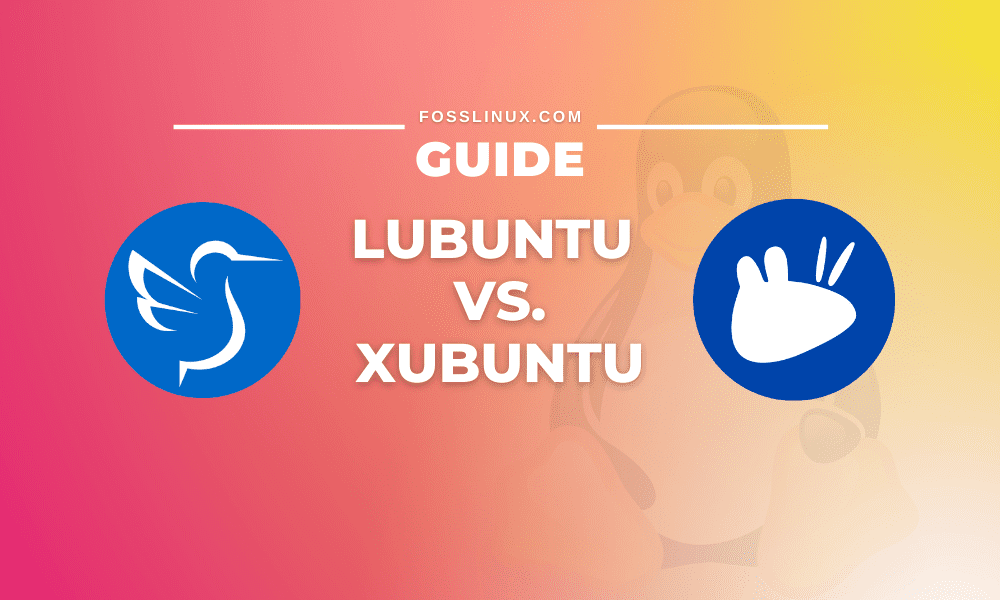Over the years, two famous Linux distributions (Xubuntu, configured with Xfce, and Lubuntu, which has a preconfigured LxDE Linux distro) have provided options to users who want to try something different other than the apparent vanilla Ubuntu. Despite being different Operating systems, they are popular among Linux distribution users.
Suppose you asked yourself what operating system can fit or run on your old computer without dragging, then here are the two lightweight Linux options for you.
Lubuntu OS selects light apps to incorporate into the system between the two distros, boosting its fastness. This, therefore, makes it an easy-to-use OS compared to Xubuntu. However, Xubuntu also has some great features worth trying.
To have a clear understanding of the two systems, please go through this article since it has the details you need to select between the two Operating systems. Let us dig in to find these by comparing and contrasting the facts and figures about these two Operating systems.
Xubuntu

Xubuntu Desktop Environment
Xubuntu is a very lightweight, stable, and easy-to-use desktop environment. The preconfigured Xfce enhances its lightness. Many users prefer this Linux distro because of its efficiency and boosted working speed for slower laptops/computers.
Xubuntu provides users with an adorable and excellent User Interface (UI) system without impacting the system resources. One feature to note here is that Xubuntu has a few enhanced features and UI.
Earlier, we mentioned Xubuntu’s Xfce environmental structure. The desktop environment is lighter compared to KDE or GNOME. Additionally, Xfce is not as bare as the latest desktop environment of Lubuntu (LxQT), as it also has multiple software applications available. This unique Operating system works with a small RAM size of 512 MB. This should be the most diminutive size of the Ram for proper working.
Lubuntu

Lubuntu Desktop
This is a Linux kernel-based distro because its system was entirely built under the GNU license as an open-source tool. This means that anyone can modify the operating system’s initial code to suit their preference. Once a software’s initial code can be altered or modified, the software should entirely be free, so is Lubuntu’s Operating system software. Its lightweight properties enhance its speed thus, categorizing it as a fast Operating system.
The OS offers an easy-to-use interface hence making Lubuntu user-friendly. In addition, the Operating System’s lightweight property is in check because of the LxQt desktop environment. This makes the system more stable and reliable to anyone, especially those with old computers/laptops. The environment also makes it better for use compared to other lightweight Linux distros. Lubuntu allows a user interface interaction as one can move icons to the place of their liking because it has a right-click menu to do this for you. This boosts the user experience with the OS.
Nonetheless, it doesn’t offer any desktop animation effects, which means it has little customization scope. Compared to Xubuntu that uses LibreOffice, Lubuntu uses Gnumeric and Abiword. This OS can support an older computer/laptop with a low-end RAM of about 256 MB without dragging.
Similarities between Lubuntu and Xubuntu
Since there is a lot of overlap between these two distributions, they are often in the same group. So, when searching for a lightweight Linux desktop OS, they are both often recommended. For instance, if you have an old PC and need to replace it with anything like Windows XP, there are a few options to breathe new life into it, or if you want to dedicate all of your new PC’s resources and power to it.
These two distributions are often recommended for your applications and tasks. It is because these two are experts in their field, especially in keeping your computer’s energy to a bare minimum. Furthermore, these two distributions are official Ubuntu variants.
That is why they have everything you would expect from Ubuntu with Unity minus the Unity desktop and either XFCE or KDE. Alternatively, LxQT (LXDE). The latter means they both contribute to Ubuntu’s stability and security.
Differences between Lubuntu and Xubuntu
Let’s now examine when to choose between these two operating systems.
Lubuntu for sheer leanness
When looking for leanness in an Operating system, then Lubuntu is your best shot here. It achieves leanness by having LxQt(LxDE) desktop environment. This environment works well on a low specs computer systems, which means it compromises many tweaks and features for the user. Here, you are provided with a desktop skeleton that completely misses all those features you expect in a modern computer. The barebone has a desktop reminiscent of windows XP and a look-alike menu of XP to aid in accessing your installed applications.
Apart from the mentioned disadvantages, the OS has some nicely linked advantages, for instance, its simplicity and allowance to use and place icons on the desktop.
Additionally, it also supports a right-click drop-down menu that offers you unlimited options to choose from. First, as mentioned earlier, the OS lacks desktop animations and effects. This, therefore, means that you are limited in terms of customization capabilities.
Secondly, Lubuntu achieves leanness because of the application and software choices that come with this Operating system. For instance, there is the provision of Gnumeric and AbiWord as replacements to LibreOffice. Those are some of the default applications that Lubuntu has. Advantageously, the OS runs perfectly on a computer with as low as 256MB of RAM.
Choose Xubuntu for better performance and modernity
Xubuntu, unlike Lubuntu, comes with modernized and refined features that you would expect from a modern desktop. It uses the preconfigured Xfce desktop, thus not compromising aesthetics or features to provide the lean desktop. This is because Xfce is way lighter compared to GNOME, KDE, or Unity.
The Operating System comes with the original LibreOffice office compared to Lubuntu that comes with filtered alternatives. Like Lubuntu, Xubuntu also achieves leanness without compromising aesthetics or performance. This OS supports up to a small RAM size of up to 512 MBs for proper operations.
Choose Lubuntu for the most Lightweight system.
Lubuntu proves to be much lighter than Xubuntu since it uses fewer system resources for hardware and software requirements. It filters all available applications and chooses the preferred one to install, reducing the number of applications run by the system.
Running fewer applications means that the system uses less memory to as low as 256MB to keep them functional. Compared to Lubuntu, Xubuntu is not that light as it contains a wide variety of polished features that enhances its complexity.
Lubuntu has a great desktop environment with features such as GNOME, Unity which boost its lightweight properties compared to Xubuntu. However, this LxQt feature doesn’t give Lubuntu a modern feel compared to Xubuntu that uses Xfce. This makes Lubuntu look more outdated in front of Xubuntu.
Let us break this down for you in a comparison table for easy comprehension.
| Xubuntu | Lubuntu |
|---|---|
| Xubuntu is less lean than Lubuntu despite being lighter than Unity or GNOME because of the Xfce environment desktop. | Lubuntu is a lean desktop because it uses a limited number of applications, software, and hardware packages, making it look like a desktop skeleton. Its’ desktop environment(LxQt) is a great enforcer of this lightness. |
| Xubuntu comes with the original LibreOffice meant for Linux distros | Lubuntu uses enhanced office alternatives for LibreOffice, such as Abiword and Gnumeric. This comes with other default applications instead of the original software. |
| Xubuntu offers more features when contrasted to Lubuntu. This makes it outstanding and user-friendly because of the polished customizations it has. | Lubuntu, on the other hand, does not provide additional features hence making it bare as it only supports minimal customizations. |
| Xubuntu looks more modernized | Lubuntu Looks like an outdated design of Linux distro. |
| Xubuntu is a light-weight operating system accompanied with Xfce desktop environment | Lubuntu is more Lightweight compared to Xubuntu. |
| In development, Xubuntu developers use the GTK toolkit as the OS is GTK toolkit based. | In Lubuntu, the developers use the Qt programming toolkit, which is also used to create a plasma interface. |
| Xubuntu runs well on a computer with a smaller RAM of 512 MB. | Lubuntu, on the other hand, runs perfectly on a computer with as little RAM as 256MB. |
| Xubuntu uses Xfce as a desktop environment. | Uses LxQt or LXDE desktop environment |
Conclusion
From the comparisons we have enlisted above, you have all it takes to choose your preferred Operating system. Let us rush through it all to summarize our ideas for you between the two operating systems.
If you are looking for the most lightweight Operating system, Lubuntu is the best shot. We recommend this because it uses the least system resources. Additionally, Lubuntu comes with the fewest installed applications, unlike Xubuntu, which comes with many unfiltered applications and features. It means there is the use of a lot more resources.
We do not, however, say that Xubuntu is not a lightweight system. It is a relatively lightweight Operating system, as in, it’s lighter than other Linux distros such as Ubuntu and Kubuntu, but Lubuntu is actually lighter between the two (Lubuntu and Xubuntu). For users who prefer some polish can spare a bit more system resources, then go with Xubuntu.
When it comes to look and feel, then Xubuntu is more elegant and better looking. The system is outstanding as it comes with more features, making it more user-friendly than Lubuntu, whose system display looks outdated and bare. This makes it challenging to customize the OS as it only allows very minimal customization options. Unless you have an old PC with some pretty old specifications, I recommend that you go with Xubuntu to enjoy your computer’s better display operation rate.
Xubuntu is suitable and lovely for use in features and applications because of the advanced environmental desktop.
After reviewing the two Operating Systems, we are sure that you can choose for yourself the best Operating system that suits your PC’s specifications. Have you tried either of these distros? Why and what was your experience? Still not convinced on which way to go? Just take them for a spin on live USBs and decide for yourself. Please share your thoughts and experiences with us in the comments section below.


3 comments
To check these 2 distros out you can install Ventoy on your USB stick, then copy Lubuntu and Xubuntu iso files to it, then boot from the USB stick.
“This is the way.”
As a long time Lubuntu user I ran into trouble after updating to LTS 20.04: There is no Multi-user setting anymore for the desktop (“switch users”), only one user can use the computer a t a time (ssh logins and tty not counted in). Hence, Xubuntu 20.04 became my friend, supporting “switch users”, so my wife and I still can share one computer and switch without logging on and off each other.